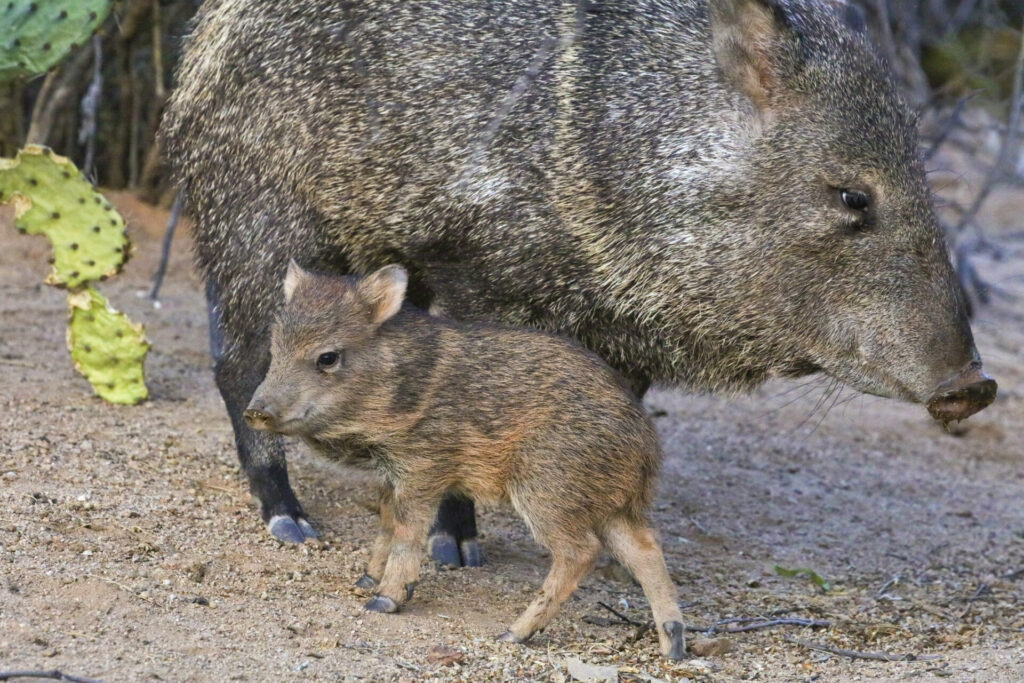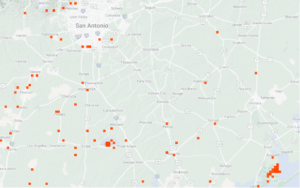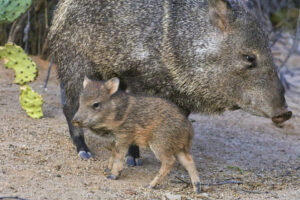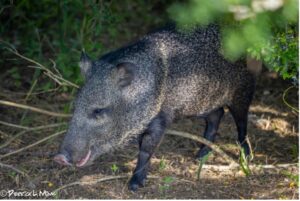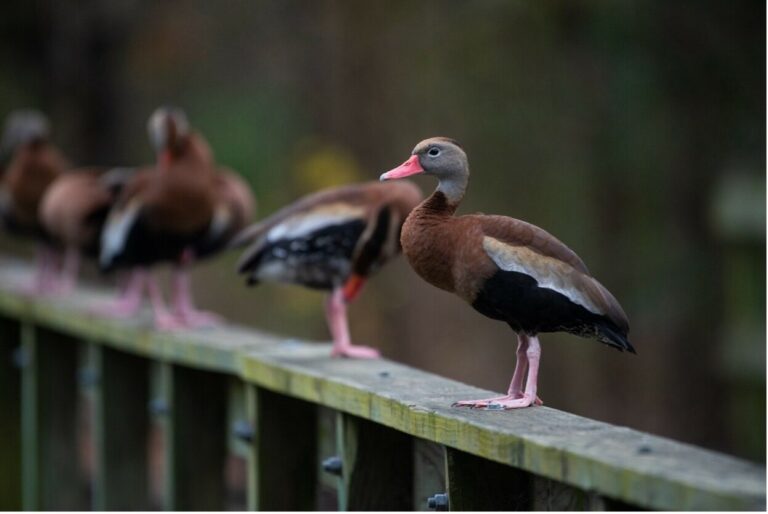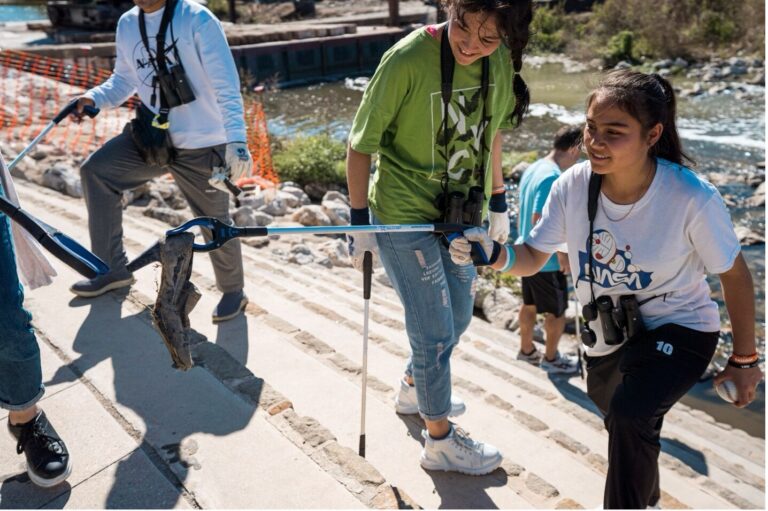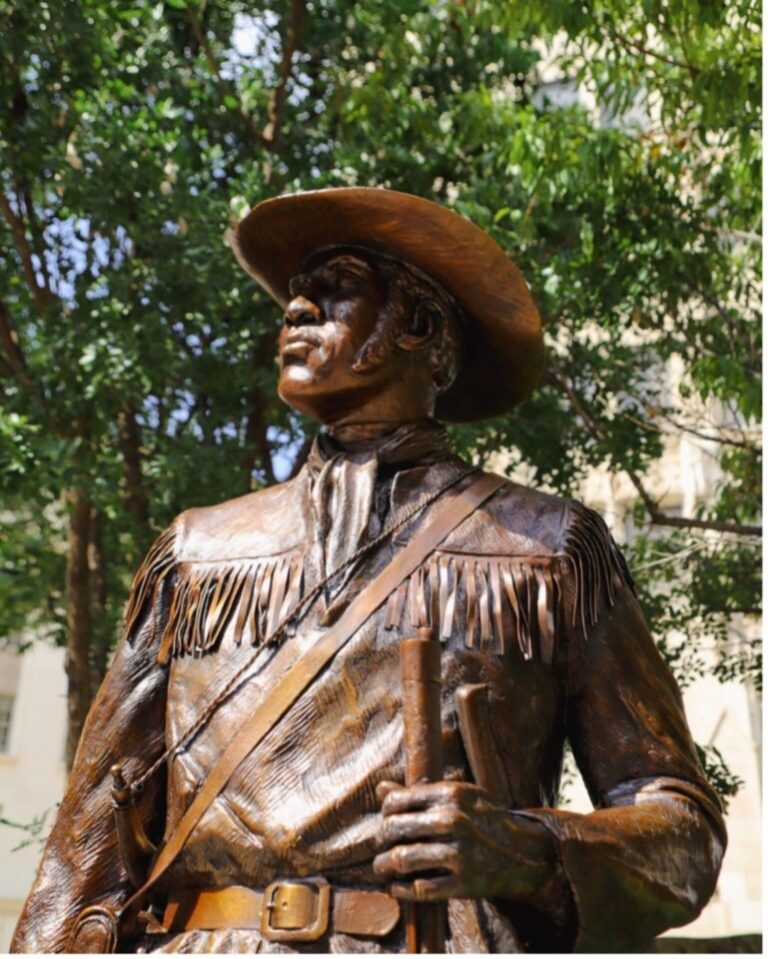Last Updated on February 1, 2024
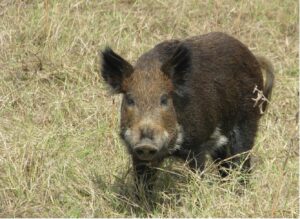
Don’t be a boar! Wild pigs, like the one pictured here, forage mainly by rooting vigorously through the soil, whereas native javelinas do not.
More differences include the javelina’s short, straight, interlocking canine teeth, a scent gland above its tail (you might smell them before you see them!), and most notably, the “collar” of white hair ringing the neck. This small, ungulate (hooved animal) does not root like wild boars and is significantly less destructive. Javelinas are hunted by mountain lions, bobcats, and coyotes, whereas wild pigs have no natural predators. These unique characteristics, among many others, make the Collared Peccary a magnificent, overlooked creature that resides in the San Antonio River Basin.
WHERE ARE JAVELINAS FOUND IN THE SAN ANTONIO RIVER BASIN?
This herd mammal can tell us much about the habitats it calls home. For instance, a javelina’s complex stomach is extremely good at processing forage, of which mesquite, fruits, nuts, tubers, insects, and cacti/succulents —especially the Prickly pear cacti and lechuguilla—are favorites. The javelina is also adapted to survive prolonged periods of drought. They can utilize the water in prickly pear cacti better than most other mammals by eating the thorny pads and have kidneys attuned to conservation by concentrating urine. These adaptations prove that this creature has evolved in areas of arid South Texas.
According to iNaturalist, Collared Peccaries have been spotted throughout the San Antonio River Basin and surrounding areas, mainly in more rural areas where they can find brush cover.
Observations of the Collared Peccary in the San Antonio River Basin and surrounding areas in the past five years. (iNaturalist)
TIPS FOR SPOTTING JAVELINAS
One of the javelina’s major adaptations for survival is traveling in a large family group called a squadron (cue mental images of javelinas in Stormtrooper outfits!). These squadrons have anywhere from 10 to 50 javelinas, and each has a specific territory it defends. This means you’ll probably spot more than one javelina at a time! A general rule of thumb is to look for javelinas in the morning and evening—and at night during the hottest months—when they spread out to forage for food before seeking shelter from the midday sun in brush cover, caves, or outcroppings. Nowadays, this snout-nosed desert dweller can be hunted in 99 out of 254 Texas counties, including Bexar, Wilson, Karnes, and Goliad counties, and a few protected herds still roam freely from the coastal plains to the Trans-Pecos. If you get the uncommon opportunity to spot a javelina, soak it in, take a picture, and try not to mistake it for a pig!
Hey cutie! Baby javelinas are called “reds” due to the reddish color of their fur.
HOW TO HELP THE JAVELINA
Let’s do our part to ensure we continue living in harmony with javelinas for generations to come. Here are five ways you can support them!
- Don’t feed the javelinas! One of the main reasons people have problems with javelinas is because they intentionally feed them. This causes the javelinas to become accustomed to humans, and they may eventually become dangerous—a lose/lose scenario.
- Store garbage and pet food securely. Leaving these items out will attract javelinas, so feed pets indoors or remove leftover food immediately.
- Fence gardens, fruit-bearing trees, and spaces under your house. Fruit, bird seed, flowering plants, bulbs, ornamental plants, and richly fertilized soil can encourage javelinas to root for food in your yard (a behavior they do not traditionally engage in). This could cause damage to your gardens, sprinkler systems, and, as Arizona found out the hard way—golf courses.
- Leash your dog when hiking in javelina territory. Javelinas despise coyotes and can unintentionally mistake your pet for one! Keep Fido leashed so he doesn’t have a closer encounter with the javelina’s sharp tusks.
- Celebrate this South Texas icon! Whether reading the tale of “The Three Little Javelinas” (a personal favorite!) or hiking on your favorite South Texas trail to spot them in real life, there are many ways to celebrate this iconic critter who plays a crucial role in our local ecosystems!
This javelina looks like they are jave-n a good day!

